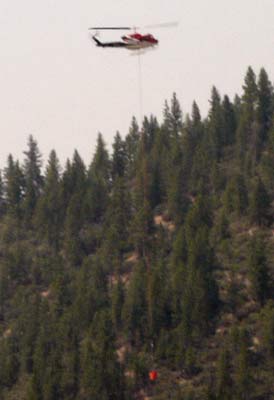
Fire Helicopter from Quincy
 Fire Helicopter from Quincy |
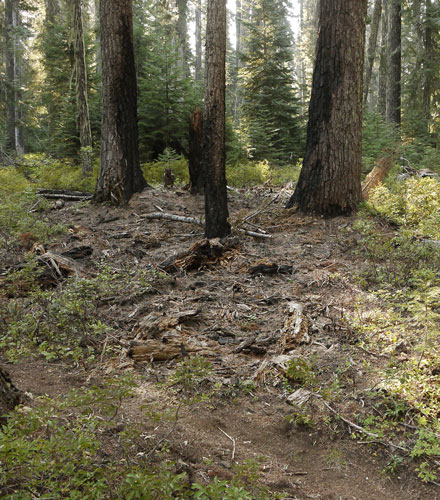
This Spot Fire was Controlled To This Small Area. |
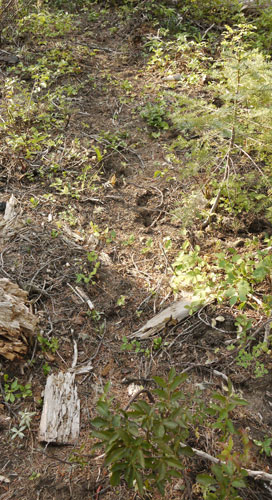
The Fire Break Line |
| The PCT crosses the bottom of the left photo: the fire break can also be seen intersecting the PCT about bottom center. Probably the fire was lightning caused, but next to a trail like this, a smoker or someone using a stove may have started it. The fire was big enough to char and smoke 10' up the trees. Hiking in and controlling small fires like this before they get big is the everyday work of backcountry firefighters. | |
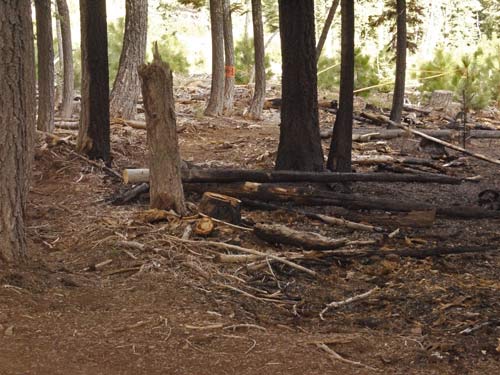 Another Spot Fire |
| What looks like a trail is the firebreak cut down to mineral soil. The orange and yellow tape in the background may be where the fire started. Note two trees were felled to keep their flaming crowns from falling across the fire break. |
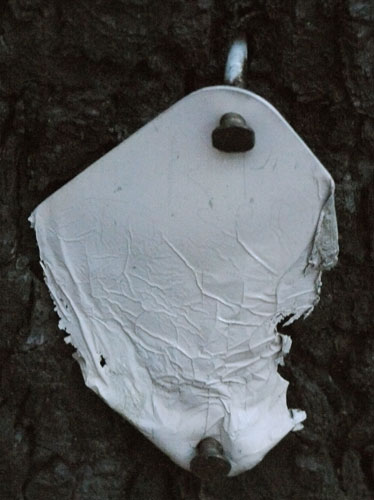
Aluminum Diamond ♦ Blaze Deformed and Partly Consumed in Forest Fire |
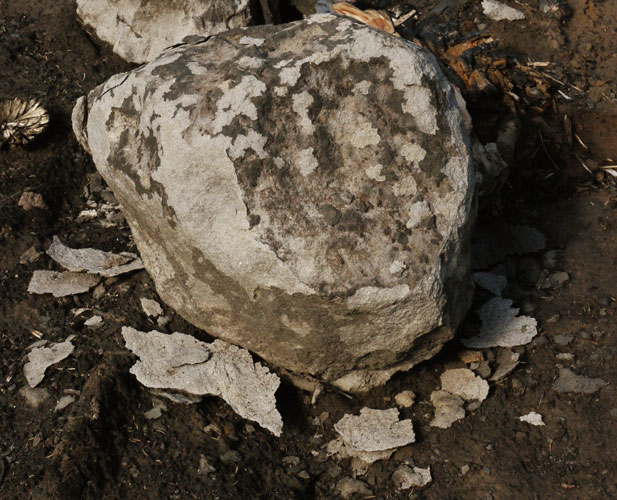
This Fire was Hot Enough to Pop Chips off this Rock. |
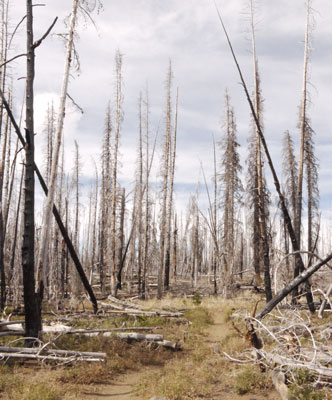
This Fire Killed But Did Not Burn These Trees. |
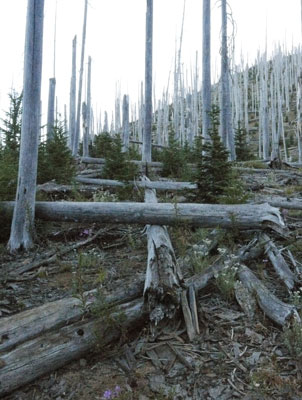
This Fire Burned Most Branches. Over Several Years, The Bark Slid Off and the Wood Greyed in the Sun, Leaving Silver Trunks. |
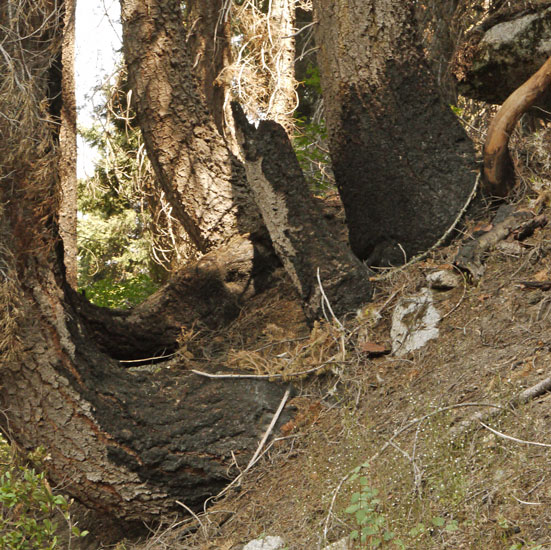
Char on Various Tree Sides |
|
To the left, the tops of two tree trunks are charred. Duff sliding down the slope over many years probably collected atop the bent tree trunks, providing the fuels that burned the top of the bark. Right of center, collected duff and heat reverberating between two trees caused the downhill and front sides to char on this one tree only. The tree in the upper right corner was killed but not burned. The bark slid off and has collected just downslope. |

Bark Charred Only Under Duff |

Char Inside Hollow Tree |
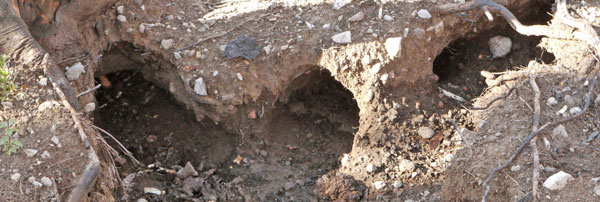
Roots Burned Completely and Left These Tunnels. |
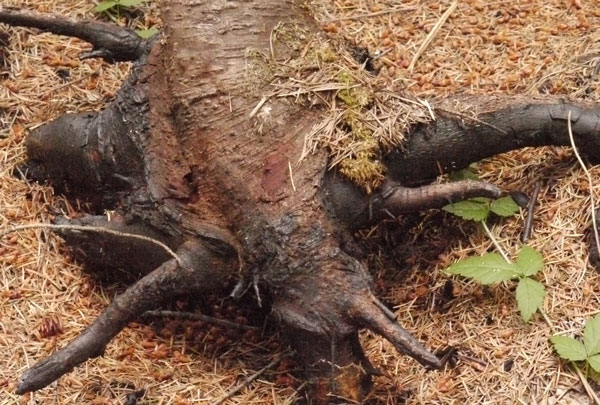
A Stump Burned Out Under This Tree. |
| This tree probably germinated on an old stump. A stump is a pretty good place for a seedling to grow, as it may hold water like a sponge. The roots spread out over the top and down the sides of the stump, finally reaching soil. They thicken as the tree matures, but are still shaped like the rotting stump. The fire removed the stump, leaving the stump shaped space below the roots. The fresh needle duff indicates many trees nearby were killed, but not burned. All the needles fell fairly soon after the fire. |
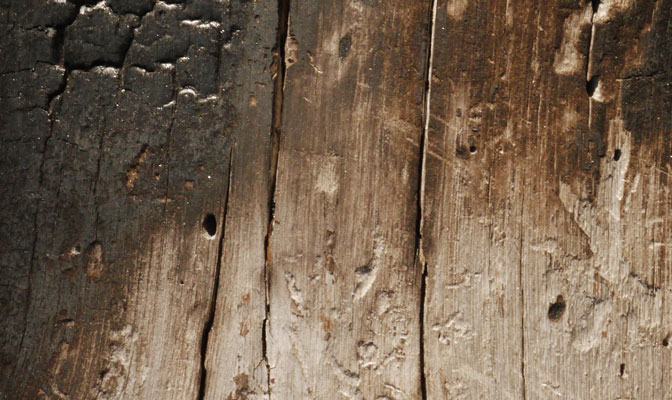
Fire Protection by Bark |
| The upper left area was not covered by bark and was alligator charred in a forest fire. The bottom area was covered by bark well adhered to the tree, so that the outside of the bark may have burned but the bark completely protected the wood beneath. At the top, the bark was peeling off and there was a gap. Hot air and smoke passed through the gap, lightly charring the wood and depositing black smoke particles. |
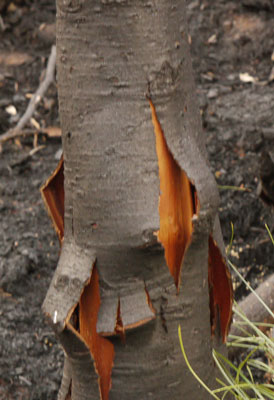
Bark Killed and Sliding After Fire |
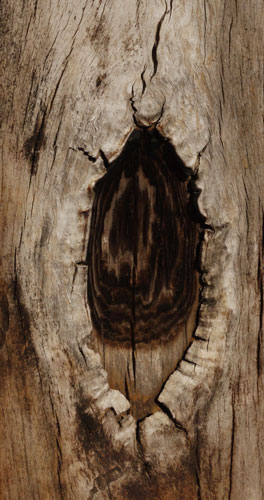
Annual Rings Burned and Accented by Fire |
After a few years, some black char wears away, still leaving a distinct ring pattern. Ax cuts through the wood grain leave similar ring like patterns, but they will be smoother, while the charred rings will have a stepped texture. |
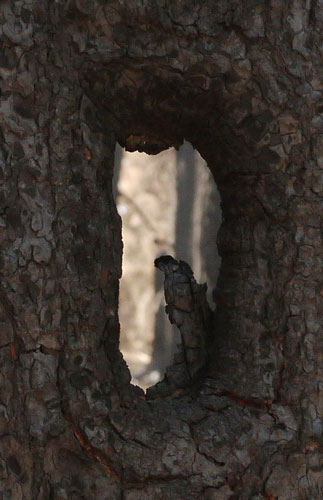
Old Blaze Burnt Through |
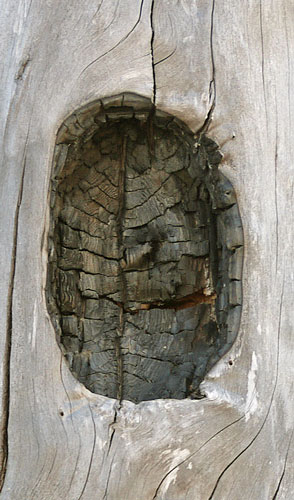
Blaze Charred Deeply |
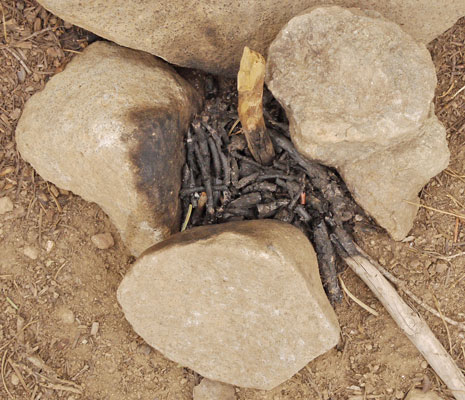
Tiny Camp Fire |
| This fire was probably just big enough to boil a bit of water. |
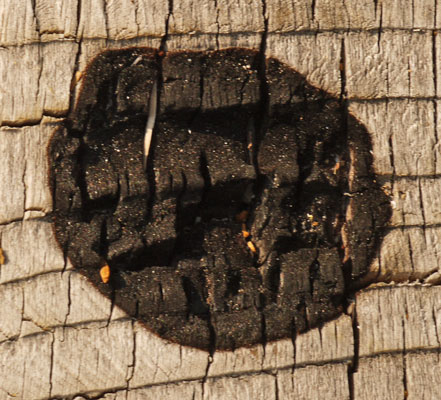
Small Burn Atop a Stump |
| This probably burned when someone using an open cup alchohol stove spilled some burning fuel. |